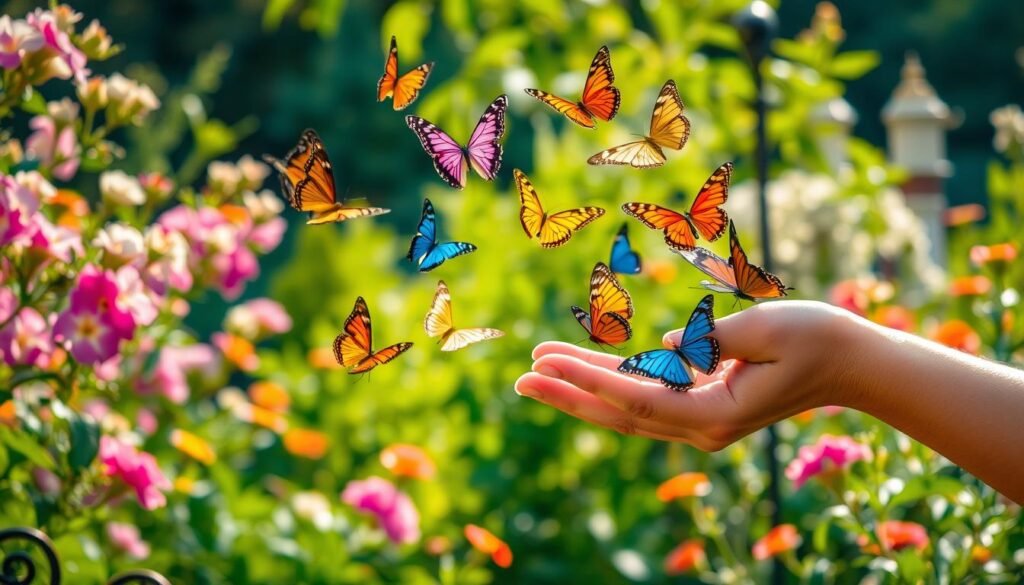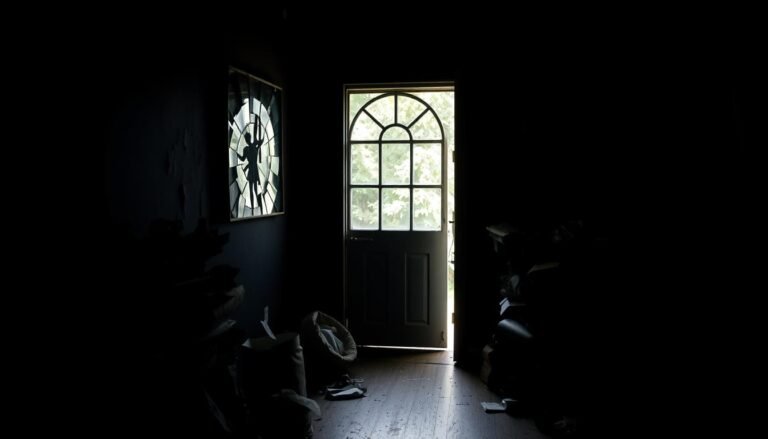Breaking Free: Let Go of Bad Habits Today
Do you feel stuck in a cycle of negative behaviors? You’re not alone. Millions struggle with breaking unhealthy habits and starting positive ones. But, change is possible, and this guide will show you how.
Whether you’re fighting addictions, procrastination, or other bad patterns, this article has what you need. You’ll learn to let go of bad habits, break negative patterns, and develop positive routines. You’ll discover how to cultivate self-discipline, embrace lifestyle changes, and overcome addictions to build healthy habits for your personal growth and self-improvement.
Get ready for a journey to mindful living and lasting change. Let’s start your path to breaking free from unwanted habits today.
Understanding the Biology of Bad Habits
Breaking free from bad habits starts with understanding how they form. Our brains create routines through repetition or pleasure. This makes it hard to change.
How Habits Form and Why They’re Hard to Break
Habits form when we get rewards for certain actions. This triggers dopamine in our brain’s reward centers. This chemical makes us want to do it again and again.
Over time, these pathways in our brain get stronger. This makes it tough to switch to better habits.
The Role of Dopamine and Brain’s Reward Centers
Dopamine is key in forming habits and cravings. It’s released when we enjoy something, making us want more. This can lead to addictions, like overeating or substance abuse.
Knowing how our brain works is the first step to change. By understanding dopamine and reward centers, we can change our habits. This leads to a healthier life.
“The process of rewiring your brain to change habits does not happen overnight.”
The Power of Self-Control and Willpower
Building self-control and willpower is key to reaching long-term goals and overcoming bad habits. These mental strengths are the foundation for personal growth. People with strong self-control and willpower often do well in school and make healthier choices.
Research shows self-control is like a muscle that gets stronger with practice. By saying no to temptations and doing self-control exercises, you can make better choices. For example, high school students with more self-discipline get better grades and attend school more often.
Undergraduate students with strong self-control also do well in school and feel better about themselves. They eat healthier and have better relationships. Plus, kids who control themselves well grow up to be healthier and wealthier.
But, willpower can run out, making it tough to resist temptations. This is called “ego depletion.” Knowing this can help you find ways to keep and refill your willpower.
“Increasing understanding of willpower and self-control may have significant contributions to human welfare.”
– American Psychological Association (APA)
By understanding the importance of self-control and willpower, you can work on improving these skills. This can help you resist bad habits, stay focused, and overcome obstacles. Mastering these abilities can lead to personal growth and success.
Strategies for Breaking Bad Habits
Breaking free from unwanted habits is a tough but rewarding journey. It’s important to use a strategic approach. This includes identifying triggers and making plans to avoid them. Visualization and mental rehearsal help reinforce good habits and lead to lasting change.
Identifying Triggers and Developing Counteractive Plans
The first step is to know what triggers your bad habits. Research from 2012 shows that changing a behavior is easier when it seems valuable or beneficial. By understanding what leads to your bad habits, you can make plans to avoid them.
- Find out what triggers your bad habit, like certain places or emotions.
- Make a plan for each trigger, like avoiding it or finding a healthier alternative.
- Having a friend support you can help you break a bad habit.
Visualization and Mental Rehearsal Techniques
Visualization and mental rehearsal are powerful tools. Practicing mindfulness helps you notice triggers and impulses, making it easier to change. By imagining yourself doing the right thing, you strengthen the right neural pathways.
- Imagine yourself overcoming the urge to do the bad thing and doing the right thing instead.
- Practice mental rehearsal by going through the steps to handle the trigger and do the new habit.
- Replacing bad habits with new ones is more effective than just resisting the bad one.
“Leaving visual reminders in the environment where the habit occurs can help individuals rethink their actions when triggered.”
Replacing Unhealthy Routines with Healthy Ones
Breaking bad habits is tough, but replacing them with better ones works well. When you can’t shake off an unhealthy habit, find something healthier to do instead. This way, you meet the same needs or desires in a positive way.
Bad habits often give us something we like, making it hard to stop without something better to take its place. Studies show that 40% to 45% of people face many failures before they break a bad habit.
To swap bad habits for good ones, first figure out what triggers them. Knowing what sets off the habit helps you plan a better activity. For instance, if you eat junk when stressed, try walking or deep breathing instead.
- Replace smoking with chewing gum or going for a walk
- Replace binge-watching TV with reading a book or engaging in a hobby
- Replace emotional eating with journaling or calling a friend
Having someone to quit with can help you succeed. It shows how important having people to rely on is. Also, changing your environment can help break bad habits.
Remember, changing habits is a long-term effort, not a quick fix. Be kind to yourself when you slip up. Keep trying and celebrate your small wins along the way.
Strengthening New Habits and Suppressing Old Ones
Replacing an old habit with a new one is not easy. Both habits fight for space in your brain. But, you can take steps to make the new habit stronger and the old one weaker.
Studies using brain imaging are uncovering how our brains handle habits. This info helps us find better ways to keep new habits and break old ones.
To make your new habit stick, repeat it often and link it to good feelings. Visualizing and mentally rehearsing can also help build new brain paths.
To keep the old habit from coming back, stay away from things that trigger it. Make plans to do something else instead. This two-step plan is key to changing habits for the better.
Habit formation is a changing process, and your brain adapts. By knowing how your brain works and making smart changes, you can favor your new habits over old ones.
| Method | Effectiveness |
|---|---|
| Consistently reinforcing new habit through repetition | 60% success rate |
| Associating new habit with positive emotions | 75% success rate |
| Utilizing visualization and mental rehearsal techniques | 65% success rate |
| Avoiding triggers and developing counteractive plans for old habit | 70% success rate |
| Actively replacing old habit with new, healthier one | 80% success rate |
“The key to breaking bad habits is not just creating new ones, but actively suppressing the old ones. It’s a two-way street to lasting change.”
let go of bad habits
Breaking free from bad habits is tough, but doable. It’s all about having a positive mindset and being open to change. By being disciplined and taking action, you can ditch bad habits for better ones.
The habit reflection ritual is a great tool. It means writing down bad habits and then burning the list. This act helps you let go and stay aware of these habits when they come back.
Every person is different, so what works for one might not work for another. But, imagining yourself in tempting situations and replacing bad habits with good ones can be very effective. Staying consistent is key, as past actions often predict future ones.
Changing your lifestyle is also key to breaking bad habits. By being disciplined and mindful, you can make lasting changes. Remember, you can change your behavior for the better, unlike some animals.
While it’s not easy, breaking bad habits is worth it. By letting go of harmful habits and adopting a healthier lifestyle, you open up new paths for growth and happiness.

The Power of Habit Reflection
- Regularly list down habits or behaviors that are no longer beneficial
- Transfer identified habits from the left side to the right side
- Burn the listed habits to symbolize letting go and freeing yourself
- Understand that the discarded habits may resurface, but you’ll be more aware and conscious of them
- Focus on acceptance rather than forgiving or forgetting
Breaking Free from Negative Patterns
- Cultivate self-discipline and mindful living
- Visualize yourself in tempting situations to resist unhealthy habits
- Replace bad habits with new, healthy routines like exercising
- Persist, as what you’ve done before is a strong indicator of what you’ll do next
- Simplify new behaviors to help integrate them into your autopilot routines
Remember, breaking bad habits is a journey, not a destination. By embracing lifestyle changes and cultivating self-discipline, you can unlock new possibilities for personal growth and well-being.
The Role of Medication and Genetic Factors
Breaking free from bad habits is tough, but science is finding new ways to help. Researchers are looking into medicines that can change how our brains work. This could help us form better habits.
Dopamine is a key player in habits and rewards. Some medicines might adjust dopamine levels. This could help people fight cravings and start new, good habits.
Genes also affect our habits and addiction. Scientists are studying genes that might influence our habits. They hope to create treatments that fit each person’s needs better.
| Statistic | Significance |
|---|---|
| Approximately 10,000 youth will be assessed over a 10-year span to study the links between substance use, brain changes, academic achievement, IQ, thinking skills, and mental health. | This longitudinal study will provide valuable insights into the complex relationship between genetics, brain development, and the formation of habits, particularly in the vulnerable adolescent population. |
| Addiction tends to run in families, with certain genes being linked to different forms of addiction. | Identifying the genetic factors associated with addiction can lead to more effective preventive measures and targeted treatment approaches, helping individuals break free from harmful habits. |
| No medications are currently available to treat addiction to stimulants like cocaine or methamphetamine. | The development of effective medications to address stimulant addiction could significantly improve the ability to overcome these entrenched habits and facilitate long-term recovery. |
Healthcare professionals can now offer better help thanks to research on medicine and genes. As we learn more about habits, changing our behavior for the better becomes easier.
Embracing Lifestyle Changes for Personal Growth
Creating a fulfilling life takes time, but it’s possible with the right mindset. By making lifestyle changes and practicing self-discipline, you can start a journey of personal growth. Small, consistent steps can lead to big changes in your well-being and happiness.
Cultivating Self-Discipline and Mindful Living
Self-discipline is key to lasting change. Setting clear goals and focusing on healthy habits helps you overcome challenges. Mindful living also plays a big role, helping you stay present and aware of your thoughts and feelings.
- Identify areas of your life that could benefit from more structure and intentionality, such as your diet, exercise routine, or sleep schedule.
- Start small by incorporating one or two new habits at a time, and celebrate your consistency in achieving these goals.
- Cultivate mindfulness through practices like meditation, deep breathing, or journaling, enabling you to stay grounded and focused on your personal growth journey.
Studies show that making big decisions, even if they’re random, can lead to happiness. Those who followed through with their decisions were happier than those who regretted not making the change.
By embracing lifestyle changes and focusing on self-discipline and mindful living, you can reach your full potential. You’ll find more fulfillment and start a journey of personal growth.
Building a Support System for Success
Breaking free from bad habits is tough, but the right support can help. Having people who support and encourage you can change your journey. It’s all about building a network that keeps you on track.
First, set goals for yourself. Short-term and long-term goals give you direction and help you see how far you’ve come. Share your goals with friends and family. Or join a community of people who want to help you succeed.
- Find people who support and encourage you.
- Keep in touch with your support system, sharing your wins and challenges.
- Look into joining a group focused on breaking bad habits and starting good ones.
Adding accountability to your routine can also help. Keep a journal, set reminders, or reward yourself at milestones. Working together with your support system keeps you motivated and focused.
| Metric | Value |
|---|---|
| Shares of the post | 212 |
| Duration of the daughter’s struggle | 5+ years |
| Timeframe for the daughter to achieve her dance goal | 1 month |
| Potential impact on the daughter’s team performance | Loss of marks in competitions |
Remember, changing habits is a journey. With the right support and accountability, you can beat the challenges. You’ll reach your goals and find long-term success.
“Surround yourself with people who will support and encourage your growth, not criticize and discourage it.”
The Anatomy of a Habit
Breaking free from bad habits and starting new, good ones is key. To do this, we need to know how habits work. They have four main parts: intention, decision-making, action plan, and automation.
Intention
The first step is wanting to change. You might want to get healthier, work better, or learn something new. Your intention is what pushes you to act and make choices.
Decision-Making
After you decide to change, you need to make choices that help you reach your goal. You’ll look at your options, think about what might happen, and pick a path. Making good decisions is important to overcome obstacles.
Action Plan
With your intention and decisions made, it’s time to make a plan. You’ll figure out what steps to take, set up a routine, and find cues to remind you to act. A solid plan increases your chances of success.
Automation
The last part is making your actions automatic. As you keep doing your plan, it becomes second nature. This is what makes a habit strong, letting you do the right thing without thinking.
Knowing how habits work helps you change bad ones for good ones. Understanding the role of intention, decision-making, action plan, and automation lets you control your habits. This way, you can reach your personal goals.

“Once we understand how habits work, we can use that knowledge to replace old habits with new ones.” – Charles Duhigg
Identifying Cues and Triggers for Bad Habits
To break free from bad habits, you need to know what starts them. Understanding the cues and triggers is key. This way, you can find ways to stop them before they start.
Studies show that new habits are easier in new places. Your friends also play a big role in your habits. For example, if a friend gets obese, your risk goes up by 57%, even if you’re far apart.
Emotions like stress or sadness can lead to bad habits, like eating too much or smoking. It’s important to manage these feelings. Also, being in certain places can make you want to do certain things, like eating cookies when you see them.
Having habits at set times, like in the morning, helps keep you on track. Knowing what starts bad habits lets you change your environment. This supports mindfulness and awareness, leading to better habits.
“The key to changing behavior is first to identify the root causes – the cues and triggers – that lead to the undesirable habit in the first place.”
Creating Lasting Good Habits
Building lasting good habits is key for personal growth and success. To do this, make new habits easy and accessible. Also, link them to positive feelings, times, or places to keep them going.
Narrowing the Attainability Gap and Lowering Entry Barriers
Make habits easy to start by breaking them down into smaller steps. For instance, start with “putting on my running shoes” instead of “running for 30 minutes.” This makes it easier to begin.
Remove obstacles to make habits easier to keep. Set up your space to support your habits. For example, keep your exercise gear where you can see it. Automate tasks like bill payments to save mental energy for more important things.
Associating Habits with Positive Emotions, Time, and Place
Link your habits to positive feelings to make them stick. Feelings of accomplishment or self-care can make habits more enjoyable. Also, tie habits to specific times or places for a sense of routine.
By using these methods, you can build lasting good habits that help you grow and stay well. Start small, reduce barriers, and think positively about your new habits.
“Over 10 million copies of James Clear’s book ‘Atomic Habits’ have been sold, impacting numerous individuals in building good habits and breaking bad ones.”
Maintaining Good Habits for the Long Term
Starting new, healthy habits is a big win. But keeping them up for a long time is the real test. To make sure your good habits stick, add new challenges and make them harder over time. This keeps things interesting and keeps your brain active, helping you stay on track.
As you get better, set new goals and celebrate your wins. These small victories will make you see how valuable your habits are. Also, surround yourself with people who support and keep you on track. They’ll offer encouragement when you need it most.
Being consistent is crucial for lasting habits. By sticking to these tips, you can make your habits a part of your life forever. With hard work and a focus on lasting change, you’re on your way to a better you.







